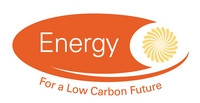Projects
Projects: Custom Search |
||
| Reference Number | UKRI-781 | |
| Title | C-Circ: Accelerating the translation of CO2 Electrolysers | |
| Status | Started | |
| Energy Categories | Fossil Fuels: Oil Gas and Coal (CO2 Capture and Storage) 100%; | |
| Research Types | Basic and strategic applied research 100% | |
| Science and Technology Fields | ENGINEERING AND TECHNOLOGY 100% | |
| UKERC Cross Cutting Characterisation | Not Cross-cutting 100% | |
| Principal Investigator |
Alex Cowan University of Liverpool |
|
| Award Type | Standard | |
| Funding Source | EPSRC | |
| Start Date | 01 April 2025 | |
| End Date | 31 March 2027 | |
| Duration | 24 months | |
| Total Grant Value | £664,190 | |
| Industrial Sectors | Unknown | |
| Region | North West | |
| Programme | Energy and Decarbonisation | |
| Investigators | Principal Investigator | Alex Cowan , University of Liverpool |
| Other Investigator | Ashley Fly , Loughborough University Lei Xing , University of Surrey Eileen Yu , Loughborough University |
|
| Web Site | ||
| Objectives | ||
| Abstract | Modern society is reliant on carbon-based products that are ultimately derived from fossil resources. The vast range of carbon products that we use daily - ranging from fuels to consumer goods, pharmaceuticals and packaging, are generated from a relatively small number of platform petrochemical products. Displacing the unsustainable model of production of these platform chemicals requires switching to alternative carbon sources. Carbon dioxide is widely considered to be a waste gas and despite efforts to minimise emissions the hard to decarbonise foundation industries (glass, cement, metals, ceramics, and chemicals) are going to continue to be major emitters for the foreseeable future. These industries are the UK’s biggest industrial emitters, producing 10% of carbon dioxide emissions and the need to reach net zero has led to a focus on employing carbon capture technologies. The question then arises – what do you do with the captured carbon dioxide? Carbon dioxide electrolysis provides a potential answer. Electrolysis can be used to convert the carbon dioxide into key platform chemicals such as carbon monoxide (syngas) and ethylene using renewable energy. This could provide a way to generate economic value from the captured carbon dioxide and provide a sustainable pathway that enables net-zero ambitions to vital carbon products. Ultimately, by coupling carbon dioxide electrolysis to direct air capture there is even potential to generate circular pathways for carbon fuels and carbon negative products. A challenge for the science and engineering community has been that carbon dioxide electrolysers typically have low carbon utilisation efficiencies (leading to low system level efficiencies) and they have low stabilities. The primary cause has been the belief that electrodes for carbon dioxide conversion need to operate under alkaline conditions. This leads to side reactions of the carbon dioxide and makes them unsuitable for use outside of the lab. Our teams work, supported by EPSRC, has demonstrated that it is possible to make electrodes that operate in acidic environments overcoming these barriers. This opens the use of alternative electrolyser designs that deliver a step-change in efficiency and stability. This project will accelerate the exploitation of the fundamental knowledge and ip we have generated on new electrodes, membranes and devices over the last 5 years. Working with stakeholders from the foundation industries, capture technology companies and end users of the carbon products we produce we will carry out proof-of-concept trials with real-world captured carbon dioxide and use the data to carry out multi-layer systematic assessments that measure the environmental and economic impact of deploying our carbon dioxide electrolyser. This is a critical step in the exploitation pathway | |
| Data | No related datasets |
|
| Projects | No related projects |
|
| Publications | No related publications |
|
| Added to Database | 16/07/25 | |



